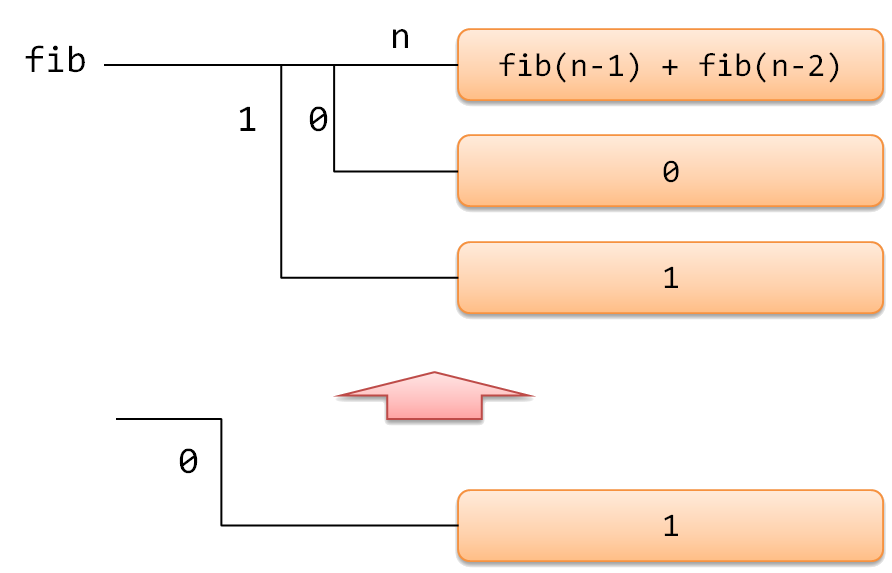Features
Amber has following characteristics which supports self-extension programming powerfully. In fact, Amber itself is implemented by self-extension from simple core language (Amber Core).
Scripting Language
Amber is a dynamic scripting language. You can write programs easily and flexibly, and can run programs instantly without compilation.
Note: I will develop a standard library for changing Amber into static typed language in case that such language is optimal. For example, the next version of Amber’s virtual machine will be implemented using the library.
Program = Data
Amber can treat programs seamlessly as usual data.
amber:1> 1 + 2 # normal expression
=> 3
amber:2> \(1 + 2) # (quotation) return given expression without evaluation
=> Add{1, 2}
amber:3> `(1 + !(2 + 3)) # (quasi-quotation, unquotation) evaluate unquoted expressions only
=> Add{1, 5}
amber:4> eval( \(1 + 2) ) # evaluate given data as a program
=> 3
See Reference/Quotation for details.
Note: The format of outputs is the internal format of expressions. It will be prettified in the next release version.
First-Class Function
Amber’s functions are all first-class objects. Therefore, you can use them in the same manner as usual data: assigning variables, passing to functions and so on.
amber:1> map(x -> x + 1, [1,2,3,4]) # x -> x + 1 is an anonymous function
=> [2, 3, 4, 5]
Amber’s following capabilities make functions powerful program components.
- Anonymous function
- Partial function
- Closure
- Vertical and Horizontal Composition
See Reference/Function for details.
Pattern-Matching
Amber supports function definitions with pattern-matching as follows.
fib(n) : fib(n-1) + fib(n-2)
fib(0) : 0
fib(1) : 1
puts(fib(20)) # => 6765
Note: The latter definitions have higher priority in case of Amber.
You can use more complex patterns and guard clauses. See Reference/Pattern-Matching for details.
Dynamic Pattern-Matching Mechanism
The most characteristic point of Amber’s pattern-matching engine is that it supports dynamic modification.
In fact, the example program of fib does not define one function but defines horizontal composition of three functions, and you can composite new function definition to it as follows.
fib(n) : fib(n-1) + fib(n-2)
fib(0) : 0
fib(1) : 1
puts(fib(20)) # => 6765
{
fib(0) : 1 # composite new definition only in this block
puts(fib(20)) # => 10946
}
Following picture depicts this mechanism.

Note: When no definition matches with given arguments, Amber treats the case as an error. It will be an exception in the next version. The reason is because Amber emphasizes its convenience over strictness. It is possible to write a library so as to enable completeness check of patterns.
Partial Function
Amber’s dynamic pattern-matching mechanism is realized by partial functions and their horizontal composition. A “Partial Function” is a function which receives limited range of arguments. Every function defined using pattern-matching will be a partial function.
Multiple functions can be composited horizontally.
By composing functions f and g using horizontal-composition operator like f | g, you can create a function which tries f and g in sequence.
amber:1> map(x@Int -> "Int" | x@String -> "String", [1,2,"three"]
=> ["Int", "Int", "String"]
This mechanism enables us to extend existing functions easily.
amber:1> map(to_s, [1,2,"three"])
=> ["1", "2", "three"]
amber:2> map(x@String -> "String:"+to_s(x) | to_s, [1,2,"three"]) # extend to_s() for strings
=> ["1", "2", "String:three"]
See Reference/Function for details.
Extensible Parser
You can replace existing syntaxes or define new syntaxes. Amber’s parser has following characteristics.
- Parsing Expression Grammer (PEG)
- Packrat Parsing
- Scannerless Parsing
- Support Left-Recursion
PEG is a simple and expressive syntax either equaling or surpassing LL syntaxes and LR syntaxes. So, you can be sure that almost any kind of languages can be implemented inside Amber. Following simple example defines C-style single comment syntax.
amber:1> comment [spacesensitive] ::= "//" [^\n]* # C-style single line comment
=> nil
amber:2> puts("hoge") // Now, you can use the new comment syntax
hoge
=> nil
See Reference/Parser for details.
Macros
You can apply macros to expressions before executing them.
Definitions of macros can be written as pattern => expression in the default Amber’s syntax. Expressions match with the pattern will be replaced with the results of expression.
amber:1> x + y => `((!x + !y) % 10) # definition of a macro
=> nil
amber:2> 5 + 6
=> 1
See Reference/Macros for details.